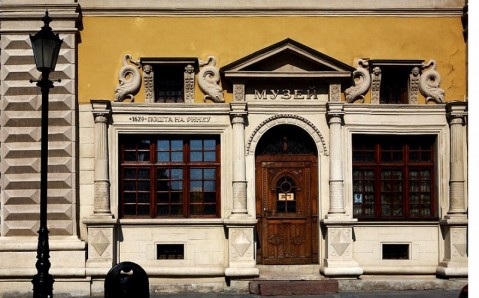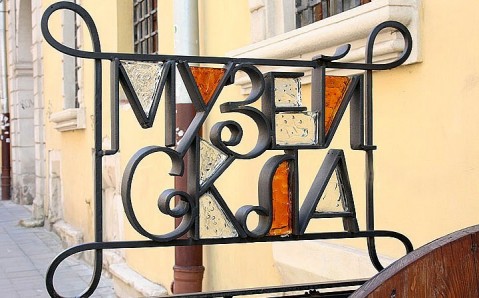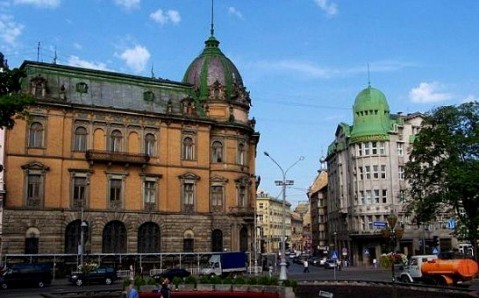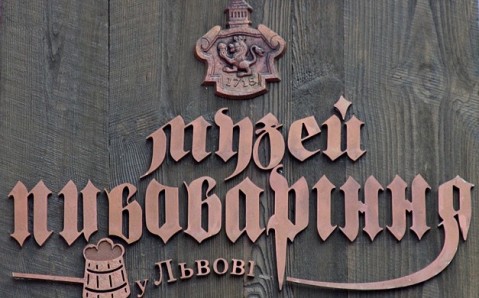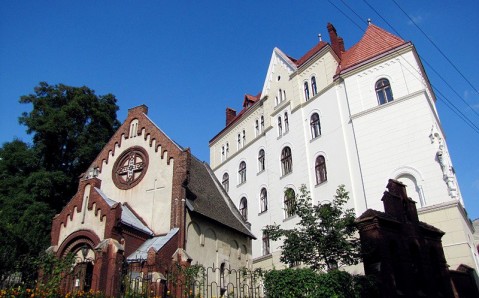Black Kamenitsa (Liberation Movement Museum)
•
Lviv (183 km.)
Black Kamenitsa (Liberation Movement Museum)
•
Lviv (183 km.)
City’s trademark building Black Kamenitsa is probably the most amazing and attractive historical construction on the Lviv Rynok Square. Thanks to invincibly riveting color of its facade and elegant stucco work that decorates it, the house is recognized as a prominent model of habitable Renaissance architecture that has no analogs in Europe. The fact that this unique building is one of the few hous
Zhovkva Castle
•
Lviv (202 km.)
Zhovkva Castle
•
Lviv (202 km.)
The four-century-old Zhovkva Castle is the main tourist magnet of the small town Zhovkva, situated in Lviv outskirts. The powerful construction, which used to be a part of the town fortification system and provided reliable protection to it, is now reckoned among the prominent historical and architectural monuments of the Renaissance period in Ukraine.
Town’s founder, Polish military leader and c
Bandinelli Palace (Museum of Post)
•
Lviv (183 km.)
Bandinelli Palace (Museum of Post)
•
Lviv (183 km.)
The Bandinelli Palace is considered to be a very interesting monument of late Renaissance architecture in Lviv, on par with other notable ancient buildings that constitute an original ensemble of the Rynok Square. It was built on the place of an old gothic kamenitsa by the merchant and pharmacist Janush Vedelsky, in the late 16th century. However, it became famous thanks to another owner, Roberto
Museum of Glass
•
Lviv (183 km.)
Museum of Glass
•
Lviv (183 km.)
Situated in Bandinelli Palace’s basement on the Rynok Square, the Museum of Glass is a part of the Lviv History Museum and features unique exhibits, telling the history of the Galych glass that was notable for its artistic finish and high quality, throughout the history.
Museum’s exposition is divided in two parts: Historical Glass and Contemporary Glass. The first hall houses various glass items,
Galych Credit Fund (Museum of Ethnography and Arts Crafts)
•
Lviv (183 km.)
Galych Credit Fund (Museum of Ethnography and Arts Crafts)
•
Lviv (183 km.)
The elegant building of the Galych Fund, topped by cupola with a spire, is rightfully called one of the most beautiful architectural monuments that adorn Lviv’s downtown. It was raised on the main city avenue in the late 19th century. The Galych Credit Fund was built after a project of the famous Polish architect whose works formed Lviv architectural appearance in the late 19th – early 20th centur
Museum Restaurant 'Salo'
•
Lviv (183 km.)
Museum Restaurant 'Salo'
•
Lviv (183 km.)
Two painters from Lviv decided that salo (pork fat) is not just the most popular product in Ukraine, but also a worthy art object. Therefore, they opened unique museum devoted to the national Ukrainian snack in the downtown. 'Salo' is the first and the only museum of its kind in the world and is reckoned among the most interesting Lviv sightseeing attractions.
The Museum Restaurant 'Salo' is an or
Kornyakt’s House (History Museum)
•
Lviv (183 km.)
Kornyakt’s House (History Museum)
•
Lviv (183 km.)
The Kornyakt’s House is rightly considered to be one of the biggest, most eminent and beautiful dwelling houses, surrounding the central city square Rynok. Its richly decorated stone building is a true gem of Renaissance housing architecture. It used to house rich merchants, Polish kings and monks in different times, and now the very interesting exposition of the Lviv History Museum is situated he
Museum of Brewing
•
Lviv (183 km.)
Museum of Brewing
•
Lviv (183 km.)
Throughout its history Lviv was renowned not only for its inimitable architecture and excellent coffee, but also for its beer, which caught the fancy of both city’s locals and guests with its high quality and exclusive taste. Therefore, it is no wonder that it was here that Ukraine’s first and only Museum of Brewing was opened, in 2005.
The museum is situated in the semi-basement premises on the L
Church of St. John the Baptist (Museum of the Lviv Oldest Monuments)
•
Lviv (184 km.)
Church of St. John the Baptist (Museum of the Lviv Oldest Monuments)
•
Lviv (184 km.)
The Church of St. John the Baptist, located at the bottom of the Lviv High Castle near the Old Market (medieval Lviv’s major trade center), is one of the oldest monuments of architecture in the city. It doesn’t astonish by its grandeur or monumentality, but fascinates by original combination of different epochs and styles, reflected in its appearance.
Temple’s history is so old that it is virtuall

 Western
Western


